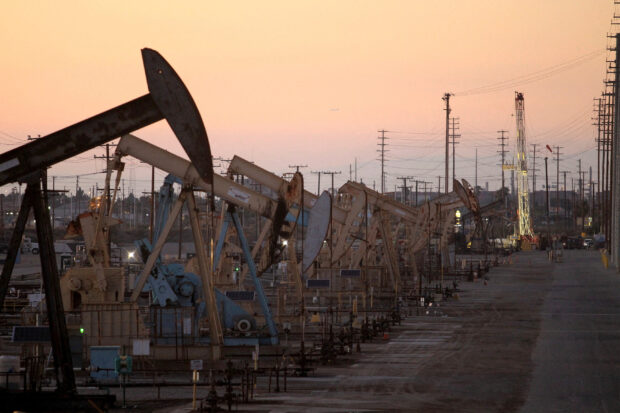Oil up as Middle East tensions persist, demand concerns cap gains

Oil rig pumpjacks, also known as thirsty birds, extract crude from the Wilmington Field oil deposits area near Long Beach, California July 30, 2013. REUTERS/David McNew/File photo
SINGAPORE -Oil prices rose in Tuesday trade as geopolitical tensions in the Middle East continued to spur concern, but gains were limited on bearish demand sentiment and as the market waited for monthly reports from oil agencies.
Brent futures for May delivery were up 37 cents, or 0.4 percent, to $82.58 a barrel by 0656 GMT. The U.S. crude April contract rose 27 cents, or 0.3 percent, to $78.20 a barrel.
While the war between Israel and Palestinian group Hamas has not led to significant oil supply disruptions, Yemen’s Iran-aligned Houthis have been attacking ships in the Red Sea and Gulf of Aden since November in what they say is a campaign of solidarity with Palestinians.
Airstrikes attributed to a U.S.-British coalition hit port cities and small towns in western Yemen on Monday, while the Houthis said on Tuesday they had targeted what they described as a U.S. ship in the Red Sea with missiles.
READ: Global oil demand seen to grow by 1.9 million bpd in 2024
Capping gains however are the outlooks for weaker demand and increasing supply from producers outside of the Organization of Petroleum Exporting Countries (OPEC).
IEA oil supply outlook
“Bearish demand sentiments and growing non-OPEC supply leave little room for the market to be bullish on oil prices at this time,” said Serena Huang, head of APAC analysis at Vortexa.
The International Energy Agency (IEA) expects oil supply to grow to a record high of about 103.8 million barrels per day, almost entirely driven by producers outside OPEC and its allies (OPEC+), including the United States, Brazil and Guyana.
Meanwhile, China’s crude oil imports rose in the first two months of the year versus the same period in 2023, but they were weaker than the preceding months, continuing a trend of softening purchases by the world’s biggest buyer.
READ : OPEC upbeat over 2024 oil demand outlook despite slowdown
In the meantime, the market is awaiting demand estimates from monthly reports by OPEC, the IEA and the Energy Information Administration, analysts from ANZ said in a note.
“While we believe the estimates will be largely unchanged, any upside surprise will ease demand concerns.”